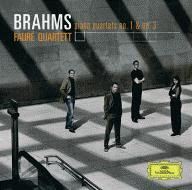Deutsche Grammophon Releases Pianist Alice Sara Ott’s New Recording, Beethoven, Available October 4
 “With long black hair, long arms and long fingers, she bestrides the keyboard, and plays with a weight of resonance and authority which belies her years and her slender frame.” – The Times (London)
“With long black hair, long arms and long fingers, she bestrides the keyboard, and plays with a weight of resonance and authority which belies her years and her slender frame.” – The Times (London)
The young German-Japanese pianist Alice Sara Ott has accomplished a tremendous amount in only a short time. Deutsche Grammophon, which released Ott’s first album in Japan in 2008, now releases her fourth recording. After virtuosic recordings of Liszt and Chopin, Ott turns her attention to Beethoven’s two C major sonatas, available October 4, 2011.
“These two sonatas are both a part of me – I have spent a lot of time with them,” says Ott. “There comes a point at which every musician has to document his or her own engagement with Beethoven. In my case this point may appear to have come early, but there is no doubt that it is a challenge that allows one to grow.” Beethoven was just slightly older than Ott is now when he published the three sonatas of his opus 2 and was regarded as a supreme piano virtuoso and tremendously talented young composer. “Normally the key of C major makes one think of brightness and energy, and this is certainly true of the op. 2 no. 3 Sonata, which exudes tremendous vitality and a very real love of life,” says Ott.
This brightness fades in Beethoven’s other C major sonata, op. 53 “Waldstein.” “Even the opening strikes me as very gloomy: the whole of the first movement creates the impression of a tempest followed in the second movement by calm,” according to Ott. “With the transition to the third movement, finally, the sun rises, while the final Rondo is like a new dawn. The work as a whole closely reflects Beethoven’s own situation at this time: he was in despair at his failing hearing, and he even toyed with the idea of taking his own life. The Allegro con brio of the ‘Waldstein’ Sonata makes this despair very clear.”
To complete the album Ott has included works that complement and were written at the same time as each sonata was. Beethoven originally intended for the Andante favori to be the second movement of the “Waldstein” sonata, but then discarded it in favor of what became the final second movement. Ott believes that it would have overpowered the sonata, but on its own it works rather well. In the other work, Rondo a capriccio in G major op. 129, one hears the charming and virtuoso younger Beethoven and the work pairs nicely with the earlier opus 2 sonata.

Comments